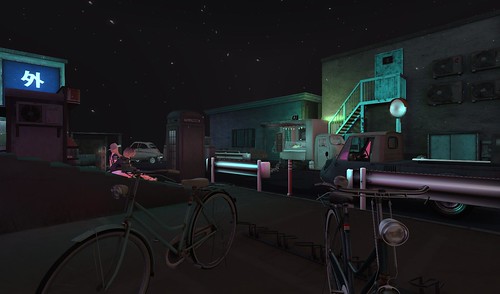He theory of planned behaviour mediate the effects of age, gender and multidimensional overall health locus of handle? Brit J Health Psych. 2002;7:299-316. 21. Sarker AR, Mahumud RA, Sultana M, Ahmed S, Ahmed W, Khan JA. The influence of age and sex on healthcare expenditure of households in Bangladesh. Springerplus. 2014;three(1):435. http://www.pubmedcentral.nih.gov/articlerender.fcgi?artid=4153877 tool=pmcentrez ML390 supplier renderty pe=abstract. Accessed October 21, 2014. 22. Rahman A, Rahman M. Sickness and treatment: a predicament analysis amongst the garments workers. Anwer Khan Mod Med Coll J. 2013;4(1):10-14. 23. Helman CG. Culture, Health and Illness: Cultural Factors in Epidemiology (3rd ed.). Oxford, UK: ButterworthHeinemann. 1995;101-145. 24. Chrisman N. The wellness seeking process: an approach to the organic history of illness. Cult Med Psychiatry. 1977;1:351-377. 25. Ahmed SM, Adams AM, Chowdhury M, Bhuiya A. Gender, socioeconomic improvement and health-seeking behaviour in Bangladesh. Soc Sci Med. 2000;51:361-371. 26. Ahmed SM, Tomson G, Petzold M, Kabir  ZN. Socioeconomic status overrides age and gender in figuring out health-seeking behaviour in rural Bangladesh. Bull Planet Overall health Organ. 2005;83:109-117. 27. Larson CP, Saha UR, Islam R, Roy N. Childhood diarrhoea management practices in Bangladesh: private sector dominance and continued inequities in care. Int J Epidemiol. 2006;35:1430-1439. 28. Sarker AR, Islam Z, Khan IA, et al. Estimating the cost of cholera-vaccine delivery in the societal point of view: a case of introduction of cholera vaccine in Bangladesh. Vaccine. 2015;33:4916-4921. 29. Nasrin D, Wu Y, Blackwelder WC, et al. Wellness care looking for for childhood diarrhea in building nations: proof from seven web pages in Africa and Asia. Am a0023781 J Trop Med Hyg. 2013;89(1, suppl):3-12. 30. Das SK, Nasrin D, Ahmed S, et al. Overall health care-seeking behavior for childhood diarrhea in Mirzapur, rural Bangladesh. Am J Trop Med Hyg. 2013;89(suppl 1): 62-68.A significant part of each day human behavior consists of creating decisions. When generating these choices, individuals generally depend on what motivates them most. Accordingly, human behavior generally originates from an action srep39151 selection approach that requires into account regardless of whether the effects resulting from actions match with people’s motives (Bindra, 1974; Deci Ryan, 2000; Locke Latham, 2002; McClelland, 1985). Though people today can explicitly report on what motivates them, these explicit reports tell only half the story, as there also exist implicit motives of which folks are themselves unaware (McClelland, Koestner, Weinberger, 1989). These implicit motives have already been defined as people’s non-conscious motivational dispositions that orient, select and energize spontaneous behavior (McClelland, 1987). Frequently, three unique motives are distinguished: the require for affiliation, achievement or energy. These motives have already been located to predict many distinctive kinds of behavior, which include social interaction fre?quency (Wegner, Bohnacker, Mempel, Teubel, Schuler, 2014), task overall performance (Brunstein Maier, 2005), and ?emotion detection (Donhauser, Rosch, Schultheiss, 2015). Despite the fact that quite a few studies have indicated that implicit motives can direct and control individuals in performing many different behaviors, tiny is identified concerning the mechanisms via which implicit motives come to predict the behaviors people today choose to carry out. The aim on the present article should be to deliver a initially attempt at elucidating this connection.
ZN. Socioeconomic status overrides age and gender in figuring out health-seeking behaviour in rural Bangladesh. Bull Planet Overall health Organ. 2005;83:109-117. 27. Larson CP, Saha UR, Islam R, Roy N. Childhood diarrhoea management practices in Bangladesh: private sector dominance and continued inequities in care. Int J Epidemiol. 2006;35:1430-1439. 28. Sarker AR, Islam Z, Khan IA, et al. Estimating the cost of cholera-vaccine delivery in the societal point of view: a case of introduction of cholera vaccine in Bangladesh. Vaccine. 2015;33:4916-4921. 29. Nasrin D, Wu Y, Blackwelder WC, et al. Wellness care looking for for childhood diarrhea in building nations: proof from seven web pages in Africa and Asia. Am a0023781 J Trop Med Hyg. 2013;89(1, suppl):3-12. 30. Das SK, Nasrin D, Ahmed S, et al. Overall health care-seeking behavior for childhood diarrhea in Mirzapur, rural Bangladesh. Am J Trop Med Hyg. 2013;89(suppl 1): 62-68.A significant part of each day human behavior consists of creating decisions. When generating these choices, individuals generally depend on what motivates them most. Accordingly, human behavior generally originates from an action srep39151 selection approach that requires into account regardless of whether the effects resulting from actions match with people’s motives (Bindra, 1974; Deci Ryan, 2000; Locke Latham, 2002; McClelland, 1985). Though people today can explicitly report on what motivates them, these explicit reports tell only half the story, as there also exist implicit motives of which folks are themselves unaware (McClelland, Koestner, Weinberger, 1989). These implicit motives have already been defined as people’s non-conscious motivational dispositions that orient, select and energize spontaneous behavior (McClelland, 1987). Frequently, three unique motives are distinguished: the require for affiliation, achievement or energy. These motives have already been located to predict many distinctive kinds of behavior, which include social interaction fre?quency (Wegner, Bohnacker, Mempel, Teubel, Schuler, 2014), task overall performance (Brunstein Maier, 2005), and ?emotion detection (Donhauser, Rosch, Schultheiss, 2015). Despite the fact that quite a few studies have indicated that implicit motives can direct and control individuals in performing many different behaviors, tiny is identified concerning the mechanisms via which implicit motives come to predict the behaviors people today choose to carry out. The aim on the present article should be to deliver a initially attempt at elucidating this connection.